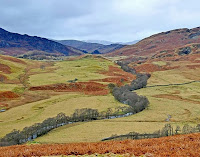 The promise that a book could be a tutor became increasingly appealing from the late 19th through the 20th century as books became less expensive, sometimes even cheap. Despite the prevalence of publications whose titles began with "How to," their content could sometimes be tricky. An 1878 article in Popular Science Monthly entitled. "How to Make Our Ideas Clear" turned out to be a dense exploration of logic by the American philosopher Charles Peirce. If I had been alive in 1924, I might have purchased a newly published copy of How to Write Short Stories, only to discover that it was a collection of stories by Ring Lardner lampooning the writing of his time. Another 20th-century title, How to Succeed in Business without Really Trying, seemed to offer potential buyers the temptation of learning without effort, but it was really a stage drama. In contrast, Dale Carnegie's earnestly titled How to Win Friends and Influence People promised that learning intangible social skills -- usually requiring years of decades of maturation -- could be accelerated with a simple purchase. My favorite of these titles is the paradoxical How to Read a Book. It sounds like a dog trying to chase its tail.
The promise that a book could be a tutor became increasingly appealing from the late 19th through the 20th century as books became less expensive, sometimes even cheap. Despite the prevalence of publications whose titles began with "How to," their content could sometimes be tricky. An 1878 article in Popular Science Monthly entitled. "How to Make Our Ideas Clear" turned out to be a dense exploration of logic by the American philosopher Charles Peirce. If I had been alive in 1924, I might have purchased a newly published copy of How to Write Short Stories, only to discover that it was a collection of stories by Ring Lardner lampooning the writing of his time. Another 20th-century title, How to Succeed in Business without Really Trying, seemed to offer potential buyers the temptation of learning without effort, but it was really a stage drama. In contrast, Dale Carnegie's earnestly titled How to Win Friends and Influence People promised that learning intangible social skills -- usually requiring years of decades of maturation -- could be accelerated with a simple purchase. My favorite of these titles is the paradoxical How to Read a Book. It sounds like a dog trying to chase its tail.That proverbial dog might prompt a question: How do real dogs and other animals learn without reading instruction manuals or "How To" books? Only half a century ago, we thought dogs' abilities came virtually entirely from inborn instincts, but we are increasingly learning how dogs also learn. For example, dogs learn that humans who show teeth when they smile are actually happy, thus overcoming the canine instinct to interpret the baring of teeth as a threat. Animals that are not pets also learn in the wild. When green parrots raised in captivity were released in the U.S.'s western mountains, the birds could not at first fend for themselves. We thus discovered that such parrots had no instinct for how to get seeds out of pine cones, but learned that technique by observing other members of their species.
I might imagine all natural terrains such as those western mountains as being an immense book, opened and laid out flat, upon which animals learn by observing, exploring, and experiencing. Each feature of Nature is like a letter, word, or sentence, around which animals discover the shape of the land's vocabulary and grammar. The language of Nature itself.
To me, one advantage of turning to the Book of Nature is that it can keep our ideas from becoming turned in upon themselves. It can keep us from chasing our own tails. The thoughts of individuals, organizations and societies can easily become enclosed and provincial. Turning our attention to Nature can wake us up and help us learn.
~~~
How do you think we can learn and grow by turning our attention to Nature?
(The photo of the tree-lined river is by Dr Richard Murray
and is used under a Creative Commons Attribution-Share Alike 2.0 Generic license.)

1 comment:
Your post has made me think about dogs exploring the ground, sniffing and finding out who and what has been there before them. It must be like a history book to them, but one written for dogs, not people.
Post a Comment